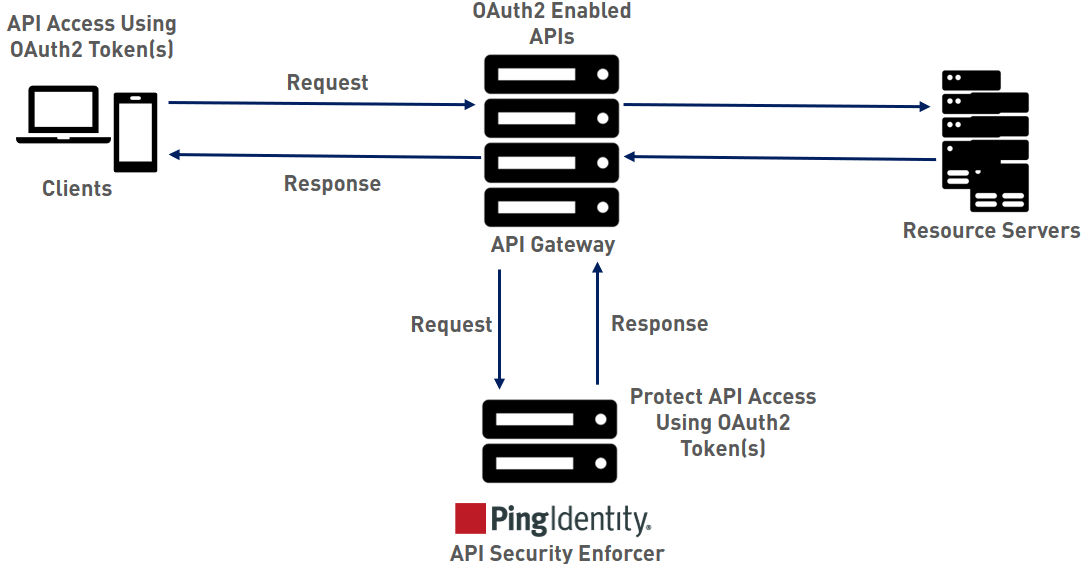Capture client identifiers in sideband mode
The API Security Engine (ASE) identifies attackers for HTTP(s) protocol using five client identifiers:
-
Username
-
API keys
-
OAuth2 token
-
Cookie
-
IP address
|
ASE supports the extraction of usernames coming in a JSON Web Token (JWT)s or custom headers. For more information, see Extract user information from JWT in sideband mode and Extract username from custom header in sideband mode. ASE can also receive usernames from a gateway policy, when ASE is deployed in a sideband mode. The PingIntelligence for APIs API Behavioral Security (ABS) AI engine identifies them based on metadata logged in ASE’s access log files. |
The following sections describe how to configure ASE to capture OAuth2 Tokens and API keys.
Configure ASE support for OAuth2 tokens
ASE supports capturing and blocking of OAuth2 tokens. To enable OAuth2 token capture, set the value of oauth2_access_token to true in the API JavaScript Object Notation (JSON) file. Here is a snippet of an API JSON file with OAuth2 token capture activated. To disable, change the value to false.
"api_metadata": {
"protocol": "http",
"url": "/",
"hostname": "*",
"cookie": "",
"cookie_idle_timeout": "200m",
"logout_api_enabled": false,
"cookie_persistence_enabled": true,
"oauth2_access_token": true,
"is_token_mandatory": false,
"apikey_qs": "",
"apikey_header": "",
"login_url": "",
"enable_blocking": true,
"api_mapping": {
"internal_url": ""
},
When enable_blocking is true, ASE checks the token against the list of tokens in the allow list and deny list. If the token is in the deny list, the client using the token is immediately blocked. Further, when is_token_mandatory is set totrue, and the incoming request has a missing token, ASE adds the IP address of the client to deny list and blocks the request.
|
For ASE to check and block the client, |
The following diagram shows the traffic flow in an OAuth2 environment:

Configure ASE support for API keys
ASE supports the capturing and blocking of API keys. Depending on the API setup, the API key can be captured from the query string or API header. Each API JSON file can be configured with either the query string (apikey_qs) or API header (apikey_header) parameter.
Here is a snippet of an API JSON file showing an API key being configured to capture the API key from the Query String (apikey_qs).
"api_metadata": {
"protocol": "http",
"url": "/",
"hostname": "*",
"cookie": "",
"cookie_idle_timeout": "200m",
"logout_api_enabled": false,
"cookie_persistence_enabled": true,
"oauth2_access_token": true,
"is_token_mandatory": false,
"apikey_qs": "key_1.4",
"apikey_header": "",
"login_url": "",
"enable_blocking": true,
"api_mapping": {
"internal_url": ""
},
When an API key is included in the API JSON file, ASE supports the blocking of API keys that are manually added to the deny list.